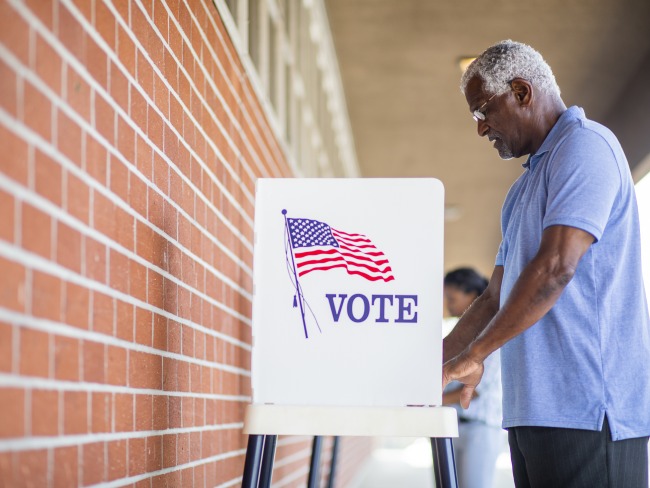The Color of Justice 2016 Report
This report documents the rates of incarceration for white, Black and Latinx Americans in each state, identifies three contributors to racial and ethnic disparities in imprisonment, and provides recommendations for reform.
Related to: Racial Justice, Incarceration
Overview
Growing awareness of America’s failed experiment with mass incarceration has prompted changes at the state and federal level that aim to reduce the scale of imprisonment. Lawmakers and practitioners are proposing “smart on crime” approaches to public safety that favor alternatives to incarceration and reduce odds of recidivism. As a result of strategic reforms across the criminal justice spectrum, combined with steadily declining crime rates since the mid-1990s, prison populations have begun to stabilize and even decline slightly after decades of unprecedented growth. In states such as New Jersey, New York, Rhode Island, and California, prison depopulation has been substantial, declining by 20-30%.1 Still, America maintains its distinction as the world leader2 in its use of incarceration, including more than 1.3 million people held in state prisons around the country.3
At the same time of productive bipartisan discussions about improving criminal justice policies and reducing prison populations, the U.S. continues to grapple with troubling racial tensions. The focus of most recent concern lies in regular reports of police brutality against people of color, some of which have resulted in deaths of black men by law enforcement officers after little or no apparent provocation.
Truly meaningful reforms to the criminal justice system cannot be accomplished without acknowledgement of racial and ethnic disparities in the prison system, and focused attention on reduction of disparities. Since the majority of people in prison are sentenced at the state level rather than the federal level, it is critical to understand the variation in racial and ethnic composition across states, and the policies and the day-to-day practices that contribute to this variance.4 Incarceration creates a host of collateral consequences that include restricted employment prospects, housing instability, family disruption, stigma, and disenfranchisement. These consequences set individuals back by imposing new punishments after prison. Collateral consequences are felt disproportionately by people of color, and because of concentrations of poverty and imprisonment in certain jurisdictions, it is now the case that entire communities experience these negative effects.5 Evidence suggests that some individuals are incarcerated not solely because of their crime, but because of racially disparate policies, beliefs, and practices, rendering these collateral consequences all the more troubling. An unwarranted level of incarceration that worsens racial disparities is problematic not only for the impacted group, but for society as whole, weakening the justice system’s potential and undermining perceptions of justice.
This report documents the rates of incarceration for whites, African Americans, and Hispanics, providing racial and ethnic composition as well as rates of disparity for each state.6 This systematic look reveals the following:
Key Findings
- African Americans are incarcerated in state prisons at a rate that is 5.1 times the imprisonment of whites. In five states (Iowa, Minnesota, New Jersey, Vermont, and Wisconsin), the disparity is more than 10 to 1.
- In twelve states, more than half of the prison population is black: Alabama, Delaware, Georgia, Illinois, Louisiana, Maryland, Michigan, Mississippi, New Jersey, North Carolina, South Carolina, and Virginia. Maryland, whose prison population is 72% African American, tops the nation.
- In eleven states, at least 1 in 20 adult black males is in prison.
- In Oklahoma, the state with the highest overall black incarceration rate, 1 in 15 black males ages 18 and older is in prison.
- States exhibit substantial variation in the range of racial disparity, from a black/white ratio of 12.2:1 in New Jersey to 2.4:1 in Hawaii.
- Latinos are imprisoned at a rate that is 1.4 times the rate of whites. Hispanic/white ethnic disparities are particularly high in states such as Massachusetts (4.3:1), Connecticut (3.9:1), Pennsylvania (3.3:1), and New York (3.1:1).
Click here to read full report.
| 1. | The Sentencing Project (2016). U.S. prison population trends, 1999-2014: Broad variation among states. Washington, DC: The Sentencing Project |
|---|---|
| 2. | Among countries with a population of at least 100,000 residents. |
| 3. | Carson, E. A. (2015). Prisoners in 2014. Washington, DC: Bureau of Justice Statistics |
| 4. | Neill, K. A., Yusuf, J., & Morris, J.C. (2014). Explaining dimensions of state-level punitiveness in the United States: The roles of social, economic, and cultural factors. Criminal Justice Policy Review 26(2):751-772. |
| 5. | Clear, T., Rose, D., & Ryder, J. (2001). Incarceration and the community: The problem of removing and returning |
| 6. | This report limits the presentation of data to these three |
offenders. Crime and Delinquency 47(3): 335-351; Lynch, J.& Sabol, W. (2001). Prisoner reentry in perspective (Vol. 3, Crime Policy Report). Washington, DC: Urban Institute; National Research Council (2014). The growth of incarceration in the United States: exploring causes and consequences. Washington, DC: The National Academies Press.
categories because white, blacks, and



